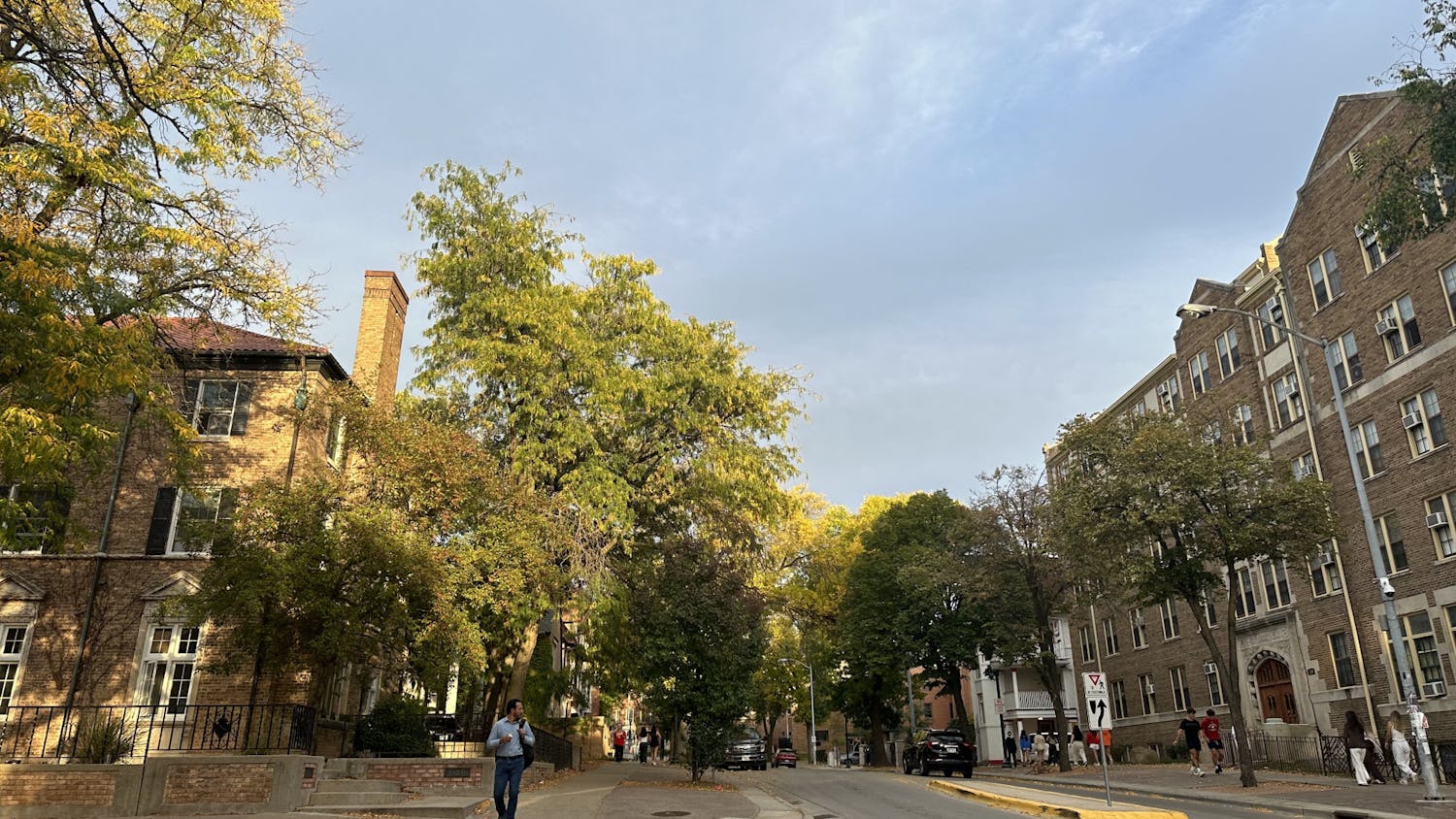Decorated with cheese shops, antique stores and unique bars, downtown Madison’s iconic State Street connects Capitol Square to the University of Wisconsin-Madison.
Today, as community members explore State Street, they may encounter the 10 traditional-sized bus stations that accommodate the five Madison Metro Transit bus routes on the street. However, by 2024, the public bus system in Madison and on State Street will likely look very different.
In January, Metro Transit released a draft plan to expand public transportation on State Street and throughout Madison in the next two years. As the final redesign plan will be voted on by the end of Spring 2022, business owners on the historic Madison strip are concerned that plans to add 60-foot-long buses and up to 70-foot-long bus shelters through the city’s bus rapid transit, or BRT, redesign will expand transportation at the cost of the street’s unique atmosphere.
Metro Transit’s proposed redesign costs $160 million — with $107 million of the funding from federal sources — and will include service to 30 new stations that will run east-west through downtown and to the UW-Madison campus. Metro Transit plans to eliminate bus service to lower State Street and maintain just two bus stations on State Street at the intersections of Gorham and Johnson, both of which are slated to be 50 to 60 feet long and 10 feet high.
With State Street’s role as a center for shopping, dining and community gatherings, Metro Transit’s plan has stirred criticism among several community members.
Emma Stepien, the manager at lifestyle boutique Madison Modern Market, operates her storefront just steps from the proposed State and Gorham bus shelter and has lived and worked downtown since moving to Madison in 2007. While Stepien feels that the city needs an efficient public transportation system in order to support the growing population, she has “reservations” about the BRT operating on State Street.
“While our downtown is in a transitional phase as the city continues to grow and has been impacted by the effects of COVID-19, State Street and the Capitol Square are in need of creative solutions to keep the historic neighborhood thriving,” Stepien said. “I feel that running the BRT down State Street and the Capitol Square treats these areas more as a thoroughfare than a destination.”
Stepien is concerned that the gravity of the buses and shelters will alter State Street’s role as a hub for commerce, pedestrians, cyclists and events.
“Do 60-foot articulated buses routed via State Street every two and a half minutes enhance the pedestrian and cyclist-friendly feel that downtown Madison has become uniquely known for?” Stepien said. “Will downtown events, which attract individuals from the entire city, be cut back or no longer exist due to BRT routes needing to maintain consistency? Currently buses are rerouted downtown 70 plus days, or 20% of the year due to special events downtown.”
Operating a few doors down from Madison Modern Market is Jazzman, a clothing store which has operated on State Street for over four decades. Jazzman owner Paul Strong supports the expansion of the bus system, but would rather see Metro Transit avoid State Street when planning bus routes.
“Jazzman, we’ve been here since 1980 and seen a lot of changes on the street,” Strong said. “This street I don’t think really needs to have the buses right on it. If they were just on an adjacent street I think that would be close enough for riders to get to and from where they have to go. I am for public transportation, but I really wish there was an alternative route versus State Street.”
Strong echoes Stepien’s concerns that using State Street for bus traffic may alter the culture of the area.
“There’s a large amount of pedestrians and activity on State Street, and the buses seem to add another dimension to it,” Strong said. “I think the shelters would be too large, the buses too large for the street with all the restaurants, shops, pedestrians and all the other activities that happen on State Street.”
Despite pushback from community members and Madison City Council’s proposed capital budget amendment to consider alternate routes, Metro Transit officials maintain that BRT will provide more direct and faster access to locations throughout Madison. Mick Rusch, spokesperson for Metro Transit, expects that BRT will expand access to State Street and reduce traffic in the area.
“The number of buses on State Street will be just 60% of those traveling in the area before COVID-19, with service no longer on the lower end closest to campus,” Rusch said. “A majority of the BRT fleet will be electric which cuts down on noise, vibrations and exhaust fumes.”
Beyond State Street, Rusch anticipates faster boarding and quicker travel times for riders and increased accessibility for individuals who face mobility challenges, along with other benefits throughout Madison.
“Studies have generally shown that bus rapid transit increases employment near stations,” Rusch said. “In addition it fosters redevelopment, increases property value and, most importantly, increases transit usage.”
Moving forward, Metro Transit is scheduling meetings for community members to learn more about the plan and share feedback. They are also planning to release a survey to collect the public’s response.
Stepien and Strong maintain that Metro Transit should consider routes other than State Street as city officials plan for the redevelopment, which is set to be implemented by the summer of 2023 and operating by 2024.
“While I recognize that BRT has the potential to connect our city and bring our community together, I believe Madison Metro, Madison Department of Transportation and city officials are not looking at the bigger picture of how this would dramatically alter the character of the downtown,” Stepien said. “I strongly feel there are alternatives that could do so without sacrificing the experience of State Street.”
Gina Musso is a Senior Staff Writer at The Daily Cardinal. She previously served as College News Editor and Features Editor, focusing coverage around student government, campus COVID updates and in-depth reporting. Follow her on Twitter @gina__musso.






